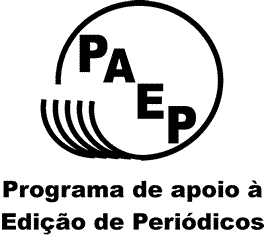Application of Profile Prediction for Proactive Scheduling
DOI:
https://doi.org/10.22456/2175-2745.120399Keywords:
application profile, scheduling, cloud computing, intelligent agentsAbstract
Today, cloud environments are widely used as execution platforms for most applications. In these environments, virtualized applications often share computing resources. Although this increases hardware utilization, resources competition can cause performance degradation, and knowing which applications can run on the same host without causing too much interference is key to a better scheduling and performance. Therefore, it is important to predict the resource consumption profile of applications in their subsequent iterations. This work evaluates the use of machine learning techniques to predict the increase or decrease in computational resources consumption. The prediction models are evaluated through experiments using real and benchmark applications. Finally, we conclude that some models offer significantly better performance when compared to the current trend of resource usage. These models averaged up to 94% on the F1 metric for this task.
Downloads
References
RAY, P. P. A survey of iot cloud platforms.Future Computing and Informatics Journal, Elsevier, [S. l.], v. 1, n. 1-2, p.35–46, 2016.
GARG, S. K. et al. Environment-conscious scheduling of hpc applications on distributed cloud-oriented data centers.Journal of Parallel and Distributed Computing, Elsevier, [S. l.], v. 71, n. 6, p. 732–749, 2011.
MURY, A. R. et al. A concurrency mitigation proposal for sharing environments: An affinity approach based onapplications classes. In: SPRINGER.International Conference on Intelligent Cloud Computing. [S.l.], 2014. p. 26–45.Dispon ́ıvel em:⟨https://link.springer.com/chapter/10.1007/978-3-319-19848-43⟩. Acesso em: 25 set. de 2018.
YOKOYAMA, D. et al. Affinity aware scheduling model of cluster nodes in private clouds.Journal of Networkand Computer Applications, v. 95, p. 94 – 104, 2017. Dispon ́ıvel em:⟨http://www.sciencedirect.com/science/article/pii/S1084804517302497⟩. Acesso em: 25 set. de 2018.
OLIVEIRA, V. et al. Alocação de ambientes virtuais com base na afinidade entre perfis de aplicações massivamente paralelas e distribuída.Brazilian Journal of Development, [S. l.], v. 5, n. 10, p. 21905–21925, 2019.
BERNARDO, E. H. C.; PINHEIRO, W. A.; PINTO, R. C. G. Phoenix: A framework to support transient overloads oncloud computing environments.International Journal of Information Technology and Computer Science, [S. l.], v. 10, p. 33–44,2018.
SHAHIN, A. A. Automatic cloud resource scaling algorithm based on long short-term memory recurrent neural network.International Journal of Advanced Computer Science and Applications, The Science and Information Organization, [S. l], v. 7,n. 12, 2016. Disponível em:⟨http://dx.doi.org/10.14569/IJACSA.2016.071236⟩. Acesso em: 30 out. de 2018.
WEI, W. et al. Imperfect information dynamic stackelberg game based resource allocation using hidden markov for cloudcomputing.IEEE Transactions on Services Computing, IEEE Computer Society, Los Alamitos, CA, EUA, v. 11, n. 1, p. 78–89,2016. Dispon ́ıvel em:⟨http://or.nsfc.gov.cn/bitstream/00001903-5/481218/1/9913227433.pdf⟩. Acesso em: 31 out. de 2018.
GUO, Y.; YAO, W. Applying gated recurrent units pproaches for workload prediction. In: IEEE.NOMS 2018-2018IEEE/IFIP Network Operations and Management Symposium. Taipei, Taiwan, 2018. p. 1–6.
DUGGAN, M. et al. A multitime-steps-ahead prediction approach for scheduling live migration in cloud data centers.Software: Practice and Experience, Wiley Online Library, [S. l.], v. 49, n. 4, p. 1–23, 2018.
NASA.NASA-HTTP - Two Months of HTTP Logs from the KSC-NASA WWW Server. 2016. Dispon ́ıvel em:⟨http://ita.ee.lbl.gov/html/contrib/NASA-HTTP.html⟩. Acesso em: 27 nov. de 2018.
NEWTON, M.The Slashdot Effect. 2016. Dispon ́ıvel em:⟨http://slash.dotat.org/∼newton/installpics/slashdot-effect.html⟩.Acesso em: 27 nov. de 2018.
GUO, F.Understanding memory resource management in vmware vsphere 5.0. [S.l.]: Vmware, 2011.
PEDREGOSA, F. et al. Scikit-learn: Machine learning in Python.Journal of Machine Learning Research, [S. l.], v. 12, p.2825–2830, 2011.
ZHANG, H. The optimality of naive bayes.The Florida AI Research Society, Fl ́orida, EUA, v. 1, n. 2, p. 3, 2004.
HASTIE, T. et al. Multi-class adaboost.Statistics and its Interface, International Press of Boston, EUA, v. 2, n. 3, p.349–360, 2009.
BREIMAN, L. Random forests.Machine learning, Springer, [S. l.], v. 45, n. 1, p. 5–32, 2001.
RUMELHART, D. E.; HINTON, G. E.; WILLIAMS, R. J. Learning representations by back-propagating errors.Nature,Nature Publishing Group, [S. l.], v. 323, n. 6088, p. 533–536, 1986.
CHANG, C.-C.; LIN, C.-J. Libsvm: a library for support vector machines.ACM transactions on intelligent systems andtechnology (TIST), Association for Computing Machinery, Nova York, EUA, v. 2, n. 3, p. 1–27, 2011.
ALTSCHUL, S. F. et al. Basic local alignment search tool.Journal of molecular biology, Elsevier, [S. l.], v. 215, n. 3, p.403–410, 1990.
JACOB, J. C. et al. Montage: An astronomical image mosaicking toolkit.Astrophysics Source Code Library, [S. l.], v. 1, p.10036, 2010.
DONGARRA, J. J.; LUSZCZEK, P.; PETITET, A. The linpack benchmark: past, present and future.Concurrency andComputation: practice and experience, Wiley Online Library, United Kingdom, v. 15, n. 9, p. 803–820, 2003.
POLTE, M.; SIMSA, J.; GIBSON, G. Comparing performance of solid state devices and mechanical disks. In: IEEE.2008 3rd Petascale Data Storage Workshop. Austin, Texas, EUA, 2008. p. 1–7.
BRANCO, P.; TORGO, L.; RIBEIRO, R. P. A survey of predictive modeling on imbalanced domains.ACM ComputingSurveys (CSUR), Association for Computing Machinery, Nova York, EUA, v. 49, n. 2, p. 1–50, 2016.
Downloads
Published
How to Cite
Issue
Section
License
Copyright (c) 2022 Allan Matheus Marques dos Santos

This work is licensed under a Creative Commons Attribution-NonCommercial 4.0 International License.
Autorizo aos editores a publicação de meu artigo, caso seja aceito, em meio eletrônico de acordo com as regras do Public Knowledge Project.














